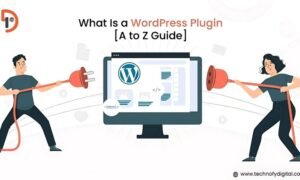Competing for online visibility isn’t easy. Between content creation, social media, and SEO, getting traffic takes time. But what if you could bypass the wait and appear at the top of search results almost instantly?
That’s where paid search campaigns come in. Running targeted promotions through Google’s advertising platform allows businesses to drive visitors to their sites quickly. Whether you want more leads, sales, or brand awareness, a well-planned campaign can bring measurable results.
However, I often see new advertisers wasting their budget by targeting the wrong audience, using ineffective messaging, or failing to track performance. This guide will help you set up and optimize your first campaign while avoiding common mistakes.
What You’ll Learn
- How Google’s paid promotion system works
- Setting up a campaign that drives real traffic
- Choosing the right search terms without overspending
- Writing compelling ad copy to boost engagement
- Optimizing landing pages for conversions
- Tracking performance and making data-driven adjustments
Let’s break it down step by step.
How Google’s Advertising Platform Works
Google’s ad system is built on a pay-per-click (PPC) model, which means businesses only pay when users interact with their promotions. Instead of waiting for organic rankings to improve, you can bid on specific search terms to appear at the top of results instantly.
However, bidding alone isn’t enough. Google’s system considers both the bid amount and ad quality when determining placement. Even with a smaller budget, a high-quality promotion with strong relevance can outrank competitors who spend more.
Factors That Affect Placement
- Bid Amount – The maximum amount you’re willing to pay per interaction
- Quality Score – A rating based on relevance, landing page experience, and expected click-through rate
- Ad Relevance – How well the content aligns with the searcher’s intent
- Landing Page Experience – The quality and user-friendliness of the destination page
Businesses that focus on both budget and quality tend to achieve the best results.
Setting Up Your First Campaign
Starting from scratch? Follow these steps to avoid wasting time and money.
Step 1: Choose the Right Campaign Type

Google offers several campaign options, but the best ones for website promotion include:
- Search Campaigns – Text-based ads that appear in search results
- Display Campaigns – Image-based placements on partner websites
- Video Campaigns – Short promotional clips on YouTube
- Performance Max – AI-driven automation for multiple ad types
If you’re new to online promotions, search campaigns are the easiest to start with.
Step 2: Define a Clear Goal
Before launching, decide what you want to achieve. Goals can include:
- Increasing website visits
- Generating leads or sign-ups
- Boosting online sales
- Raising brand awareness
Having a defined objective helps Google optimize delivery and ensures you measure the right performance indicators.
Step 3: Set a Budget That Works for You
One of the biggest myths about paid promotions is that you need a huge budget to succeed. The reality? Even a small daily budget can yield good results if optimized correctly.
Google allows you to set a daily spending limit, preventing unexpected costs. Start with $10–$20 per day and adjust based on performance.
Finding the Right Search Terms
Selecting the right terms is crucial for reaching the right audience while avoiding unnecessary spending.
How to Choose High-Performing Keywords

- Use Google’s Keyword Planner for search volume and cost insights
- Target buyer-intent terms (e.g., “buy running shoes” instead of just “running shoes”)
- Avoid broad terms that attract irrelevant visitors
- Add negative keywords to block unwanted searches (e.g., “free,” “jobs,” “cheap”)
Analyzing Competitor Keywords
If you want to see what’s working for your competitors, tools like SEMrush and SpyFu provide insights into their search terms and spending trends.
Writing Click-Worthy Ad Copy
Google’s format is short and limited, so every word must count.
Tips for High-Performing Ad Copy
- Headline 1: Clearly state what you offer (e.g., “Fast & Affordable Web Design”)
- Headline 2: Highlight a key benefit (e.g., “Free Consultation Available”)
- Description: Focus on user benefits and a call to action (e.g., “Get a website that drives leads. Start today!”)
Adding ad extensions such as location, phone number, or additional links can increase visibility and engagement.
Optimizing Your Landing Page for Conversions
Driving traffic is only half the battle. If visitors arrive at a poorly designed page, they’ll leave without taking action.
Essential Elements of a High-Converting Landing Page
- A compelling headline that matches your ad
- A clear, easy-to-find call-to-action (e.g., “Sign Up Now”)
- Fast loading speed to prevent drop-offs
- Minimal distractions to keep visitors focused
- Trust signals like testimonials and security badges
For more insights, check out this guide on turning your website into a lead-generating machine.
Tracking Performance and Adjusting Strategy
Successful campaigns aren’t just set and forgotten. Continuous monitoring and tweaking are essential.
Key Metrics to Monitor
- Click-Through Rate (CTR): Percentage of users who click on your ad
- Cost-Per-Click (CPC): The amount paid per visitor
- Conversion Rate: Percentage of visitors who complete a desired action
- Return on Ad Spend (ROAS): The revenue generated per dollar spent
For deeper analysis, tools like Google Analytics and Google Search Console provide valuable insights.
Common Mistakes to Avoid
Many advertisers lose money due to simple yet avoidable errors.
Top Mistakes Beginners Make
- Targeting too broad of an audience instead of focusing on niche prospects
- Skipping negative keywords, leading to wasted spending
- Ignoring landing page experience, which lowers conversions
- Not testing ad variations, missing opportunities for improvement
If you’re interested in testing different approaches, this A/B testing guide explains how to fine-tune campaigns effectively.
Is Google Advertising Worth It?
When done correctly, paid search campaigns can be a game-changer for businesses looking to grow their online presence. The key is to start small, track performance, and optimize regularly to ensure the best return on investment.
If you’re looking to expand beyond search campaigns, consider Facebook and Instagram ads to diversify your marketing strategy.
Final Thoughts
Online promotions offer businesses a fast-track method to drive website traffic and increase sales. While it requires careful planning and optimization, even small budgets can yield great results when spent wisely.
By focusing on targeting, ad quality, and performance tracking, you can create cost-effective campaigns that generate real business growth.Ready to get started? Explore more digital marketing strategies to build a comprehensive online presence.


